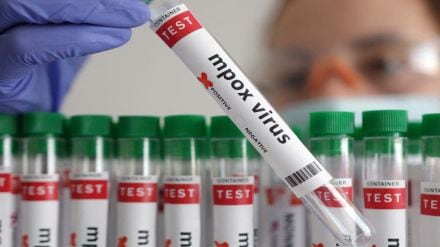Mpox Cases in India: Mpox is spreading rapidly across the world. On Monday, a 38-year-old man from Kerala was positively diagnosed with the virus Clade IB. India has reported at least 32 mpox cases and one death since 2022, but the Kerala man is the first in the country to have the clade 1b.
Amid the ongoing rise in mpox cases, it is important to know symptom of the variants of mpox. Dr Tushar Tayal, Consultant, Internal Medicine, CK Birla Hospital, Gurugram on The difference of symptoms in Clade I, Clade II, Clade Ib and Clade IIb variants of Mpox.
Monkeypox, an orthopoxvirus related to smallpox, is caused by the monkeypox virus, which is divided into two distinct genetic classes or clades:
Clade 1 (formerly known as the Congo Basin clade) and Clade 2 (formerly known as the West African clade). These clades differ in their geographic distribution, severity, transmission rates, and clinical manifestations.
“Mpox is categorized into two distinct clades: Clade I and Clade II. Experts identify Clade I as the more deadly and virulent variant, while Clade II is linked to the global outbreak of 2022. Infections caused by Clade II are generally less severe, with over 99.9% of individuals recovering fully,” he told Financial Express.com.
Clade I: This clade is associated with more severe disease.
Symptoms of Clade I variant are:
- High fever
- More extensive rash covering large parts of the body
- Severe lymphadenopathy (swollen lymph nodes)
- Greater likelihood of respiratory symptoms
- Higher mortality rate (up to 10% in some cases)
According to Dr. Tayal, Clade I has been more easily transmissible between humans, contributing to outbreaks in the Central African region.
Clade Ib, a new offshoot of Clade I
The Clade Ib strain, a new offshoot of Clade I, was first identified in the eastern region of the Democratic Republic of the Congo, Dr. Tayal highlighted. It has since been detected in four countries—Burundi, Kenya, Rwanda, and Uganda—that had not previously reported Mpox cases. Sweden also reported a case of Clade 1b, and recently, a 38-year-old man from Kerala tested positive for the strain.
“Epidemiological studies suggest that Mpox Clade 1b spreads more easily than earlier strains. Some reports indicate that the case fatality rate for Clade 1b can reach up to 5% in adults and 10% in children, with reports of pregnancy loss also noted. Given these demographic trends, new modes of transmission, such as household and heterosexual contact, appear to play a significant role in the spread of Clade 1b. This necessitates a different approach to risk assessment and reduction compared to the 2022 outbreak,” Dr. Tayal told Financial Express.com.
Clade I is typically associated with more severe symptoms, including high fever, severe headaches, muscle pain, and swollen lymph nodes. Skin lesions in Clade I infections are often widespread and may cause scarring. In contrast, Clade II tends to cause milder symptoms, he said.
Clade II: Clade II is generally associated with milder disease compared to Clade I.
Symptoms of Clade II variant are:
- Mild to moderate fever
- Less widespread rash, with pustules primarily on the face, palms, and soles of feet
- Lymphadenopathy, though typically less pronounced than in Clade I
- Milder respiratory symptoms
- Lower mortality rate (historically around 1–3%)
This clade is less transmissible between humans and often linked to animal-to-human transmission, Dr. Tayal highlighted.
Symptoms of Clade IIb (a subvariant of Clade II) are:
Clade IIb has been the variant most associated with the 2022 global outbreaks. Symptoms are similar to Clade II but seem to have slightly different clinical presentations during recent outbreaks, including:
- Lesions predominantly in the genital and perianal areas, leading to concerns over sexually transmitted modes of transmission
- Localized pain at the site of the lesions
- Some cases reported more systemic symptoms like proctitis (inflammation of the rectum) and urethritis.
- Fever and rash remain common, but the rash tends to be less extensive compared to earlier outbreaks.
“This clade has shown higher rates of human-to-human transmission, with many cases linked to close physical or sexual contact,” Dr. Tayal said. The ongoing spread of Clade IIb in global outbreaks has garnered significant attention due to its atypical presentation and transmission dynamics, he added.
